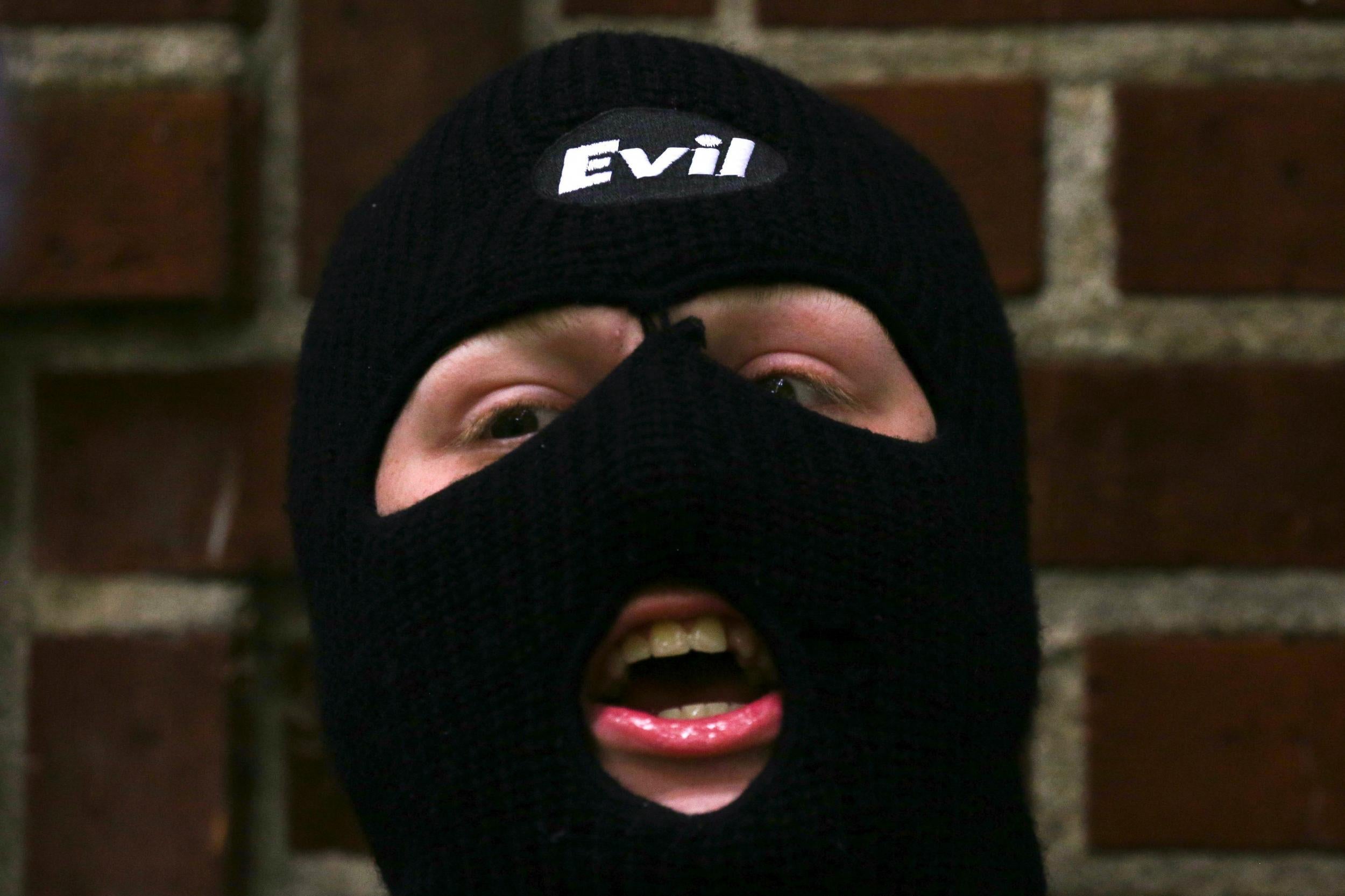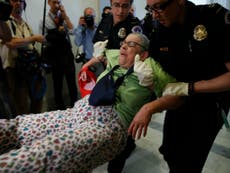America faces a new wave of homegrown political violence and terrorism if its divisions continue
The Anti-Defamation League has urged the authorities to be on high alert for violence not just from the extreme right, but from the extreme left also

Fifty years ago, America was on the brink of unforetold spasms of homegrown protest and violence, most of it fuelled by leftist anger at the Vietnam War and the establishment in general. The running battles with the police outside the 1968 Democratic National Convention in Chicago were around the corner, the election of Richard Nixon later that year would further stoke tensions. Such was the political polarisation, it seemed the country could come asunder.
It is easy to forget how crazy things got. The Weather Underground, a shadowy group of extreme-left zealots, carried out a campaign of arson and bomb attacks including at the US Capitol, inside the Pentagon and on corporate campuses. It claimed credit for 25 bombings in 1975 alone. The Black Panthers were fighting their own, parallel war. A stretched FBI was also contending with the likes of the Black Liberation Army (BLA), the Symbionese Liberation Army (SLA) and the Puerto Rican organisation Fuerzas Armadas de Liberación Nacional (FALN).
Is the country heading back there again? It’s a question I put to Jonathan Lerner, a friend whose past I knew little about until he asked me to join him on a stage in upstate New York to help him launch his latest book, Swords in the Hands of Children: Reflections of an American Revolutionary, to be published later this summer by OR Books, which is both memoir and confession. Now in his sixties, Lerner, it turns out, was a founding member of the Weather Underground. He never planted any bombs himself, but at various times served as “minister of propaganda” and joined the 1970 Venceremos Brigade to Cuba where he lived Communism for real for a while (and cut cane with Fidel Castro).
If the Weather Underground was romanticised by progressives at the time who nonetheless abhorred its violent ways, a reading of Lerner’s book leaves no doubt that it shouldn’t have been. He describes a misogynistic, corrupt leadership that convinced itself a revolution was nigh and Lenin would take the place of Lincoln on the National Mall in Washington, DC. Towards the end, he writes, the “Weather Machine” had become fetid, “with its apocalyptic view of the outside world and its self-esteem-eroding internal culture, cooked down to sludge by our isolated and overheated imaginations”.
Over time though, it was the extreme right that emerged as America’s main internal terror threat. In the past decade alone, according to a study from the Anti-Defamation League (ADL), 74 per cent of deaths from political violence in the US came from right-wing extremists, 24 per cent from Islamic extremists and just 2 per cent from left-wing extremists. An assumption was born that the far right was more likely to resort to violence than the far left. They firebombed abortion clinics, carried out the Oklahoma bombing and tried to kill congresswoman Gabby Giffords.
But again, what about now? When I asked Lerner if his experiences with the Weathermen – as his former cohorts were also known – had any bearing on today, he nodded. “There’s a very strong parallel today. People still feel like they’re not being heard,” he said. “People feel like no matter what they do, the war becomes more violent.” The ADL agrees. It recently urged the authorities to be on high alert for violence, not just from the extreme right but the extreme left also.
The warning has seemed especially apt in the wake of the near-assassination of Steve Scalise, the third most senior Republican in the House, at a playing field outside Washington, DC on 14 June. He and other Republican members were practising ahead of an annual Republican-Democrat baseball game when a 66-year-old man identified as James Hodgkinson opened fire on them with a hunting rifle. Hodgkinson, it emerged, was a former Bernie Sanders supporter and volunteer who had regularly posted anti-Trump tirades on his Facebook account.
“One act does not a trend make,” Mark Pitcavage, a senior research fellow at the ADL’s Centre on Extremism, wrote after the shooting. “But I am concerned that, in this highly polarised and divided society, more people who have stances that fall within the mainstream – on the left and right alike – may consider political violence an attractive option.”
Some in the conservative column used the shooting to try to overturn the notion that it is the far-right who are most likely to lose it and do something terrible. “Contrary to mainstream media expectations, the violence and threats come almost entirely from the political left, not the right,” contended Michael Barone, a resident fellow at the conservative American Enterprise Institute.
In Portland, Oregon, earlier this month I witnessed a rally led by the white nationalist agitator Joey Gibson and attended by a rag-tag of far-right activists. I saw first-hand the confrontation already at hand. The rally attracted a far higher number of counter-protesters, including a large contingent from Antifa. Short-hand for “anti-fascist”, this is a disorganised, but fast-growing, movement of mostly young men and women concentrated in the western parts of the US that draws its energy first from hatred of the far right, but also hatred of President Trump.
No one was hurt in Portland that day – though two men had been murdered on a commuter train two weeks previously while trying to stop another man shouting racial epithets at two young women in their carriage – but a frightening dynamic came into view. Each side was bent on inciting the other to commit violence first. A young Antifa man in his all-black garb, including face-mask, told me that speakers at the Gibson rally have been using social media to “declare open season” on him and his friends and would surely attempt to “beat us up and attack us”. But in the end, it was the other way around. The crowbars, bottles and bricks seized by the police came from his crowd, not Gibson’s. The handful of people I saw arrested were Antifa, not white nationalist.
There may not be anything akin to the Weather Underground today. Disappearing into the murk like they did to evade detection by the FBI wouldn’t be possible in the age of modern surveillance technology. But the fact is, the more the middle-ground of political discourse in America crumbles and disappears, the more the propensity towards hatred and a willingness to commit – or provoke – violence grows. That this is happening at both ends of the ideological spectrum at once only makes it more scary.


Join our commenting forum
Join thought-provoking conversations, follow other Independent readers and see their replies